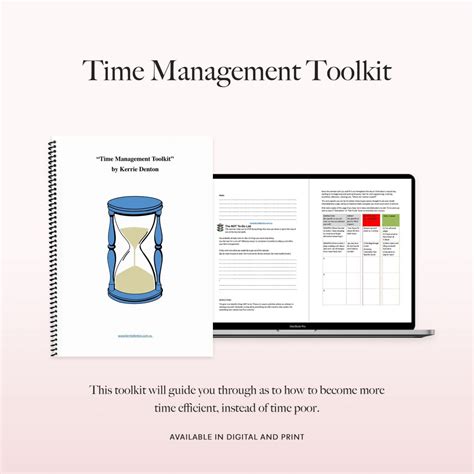Setting goals is a fundamental part of personal and professional growth, and the SMART framework offers a powerful approach to making your aspirations more achievable. In this comprehensive guide, we delve into the essence of SMART goals, exploring their importance and benefits in driving progress. We’ll walk you through the process of defining Specific, Measurable, Achievable, Relevant, and Timely goals, providing you with practical techniques and strategies to enhance your goal-setting skills. From creating clear objectives to tracking your progress and aligning your goals with your long-term vision, this guide will equip you with everything you need to master SMART goals and turn your ambitions into reality.
weninsure.xyz invites you to explore this topic thoroughly.
1. Why SMART Goals Matter: Importance and benefits of SMART goals in personal and professional development.
SMART goals are crucial for both personal and professional development because they provide a clear and structured framework for setting and achieving objectives. By defining goals that are Specific, Measurable, Achievable, Relevant, and Timely, you create a roadmap that enhances focus and direction. This clarity helps you understand exactly what you need to achieve and how to measure your progress, reducing ambiguity and increasing motivation.
Incorporating SMART goals into your planning process enables more effective time management and resource allocation, leading to better outcomes. For personal growth, SMART goals encourage setting realistic and meaningful targets that align with your values and aspirations. Professionally, they foster productivity, accountability, and a sense of accomplishment as you track your progress and achieve milestones.
Overall, SMART goals facilitate a disciplined approach to goal setting, making your objectives more attainable and your success more predictable. This structured method not only boosts your chances of achieving your goals but also enhances your overall development by promoting clarity, motivation, and sustained effort.

2. How to Define Specific Goals: Techniques for creating clear and precise objectives.
Clarity and focus are paramount when setting goals. To create well-defined objectives, begin by clearly articulating your desired outcome. Avoid vague pronouncements; instead, be explicit about what you wish to accomplish. For instance, instead of saying “I want to improve my fitness,” specify “I aim to run a 5k in under 30 minutes within three months.”
Refine your goals by using the “5 Ws” technique:
* Who is involved in achieving this goal?
* What do you want to accomplish?
* Where will this goal take place?
* When will it be achieved?
* Why is this goal important?
This approach fosters a comprehensive understanding of your goal, making it simpler to grasp and pursue.
Incorporate details that define success and outline the steps needed to reach your goal. This could involve setting up milestones, identifying necessary resources, or detailing the actions you need to take. By making your goals specific, you ensure that you have a clear target to aim for, which enhances motivation and increases the likelihood of success.

3. How to Ensure Measurable Outcomes: Methods for tracking progress and assessing success.
Ensuring measurable outcomes is crucial for tracking progress and assessing success. Start by defining clear criteria for measuring your goal. For instance, if your objective is to increase sales, specify a target number or percentage increase. This allows you to quantify progress and determine whether you are on track.
Use tools and techniques such as progress reports, checklists, and performance metrics to regularly monitor your advancements. Set interim milestones to evaluate progress at various stages, helping you stay focused and make necessary adjustments.
Incorporate data tracking methods, like spreadsheets or project management software, to record and analyze results. Regular reviews of your progress not only provide insights into how well you’re doing but also motivate you by showcasing achievements.
By establishing concrete measurement methods, you create a clear path to evaluate success and identify areas for improvement, ensuring that your goals remain achievable and aligned with your overall objectives.

4. How to Set Achievable Goals: Strategies for setting realistic and attainable targets.
Setting achievable goals involves ensuring that your targets are realistic and within reach. Start by assessing your current resources, skills, and constraints to determine what is feasible. Break down larger goals into smaller, manageable tasks to make them less overwhelming and more attainable. For example, if your goal is to complete a certification course, set smaller milestones such as completing individual modules or passing practice exams.
Consider your past performance and experiences to gauge what you can realistically accomplish. Setting goals that are too ambitious can lead to frustration, while goals that are too easy may not provide sufficient challenge. Striking the right balance is key.
Additionally, seek feedback from mentors or colleagues who can provide insights into the practicality of your goals. Adjust your targets based on their advice and any new information that arises. By setting goals that align with your capabilities and resources, you increase your chances of success and maintain motivation throughout the process.

5. How to Keep Goals Relevant: Aligning goals with personal values and long-term vision.
Keeping goals relevant involves ensuring they align with your personal values and long-term vision. Start by reflecting on what truly matters to you and how your goals fit into your broader life objectives. For instance, if personal growth and work-life balance are important to you, set goals that enhance both areas, such as pursuing a career development opportunity that also allows more time for family.
Evaluate each goal to determine how well it supports your core values and long-term vision. If a goal does not align with your fundamental beliefs or future aspirations, it may lead to dissatisfaction or a lack of motivation. Reassess and adjust your goals to ensure they resonate with your personal purpose and contribute to your overarching life plan.
Incorporate your values into the goal-setting process by asking yourself how achieving a particular goal will impact your overall well-being and fulfillment. For example, if environmental sustainability is a core value, set goals that include eco-friendly practices or contribute to environmental causes. By aligning your goals with your personal values and long-term vision, you create a more meaningful and motivating pathway to success.

6. How to Determine Timely Goals: Establishing deadlines and maintaining urgency.
Setting timely goals means establishing clear deadlines and fostering a sense of urgency to drive consistent progress. Begin by creating a realistic timeline for each goal. Break down large goals into smaller, manageable steps, each with its own specific deadline. For instance, if you aim to write a book, set deadlines for completing chapters, editing, and finalizing the manuscript.
Timelines are essential for effective task prioritization and resource allocation. Utilize calendars, planners, or project management tools to establish a clear roadmap of key dates and deadlines. Regularly assess and modify your schedule to ensure you stay on course and meet your goals.
Incorporate deadlines into your goal-setting by setting both short-term and long-term milestones. Short-term deadlines help maintain focus and momentum, while long-term deadlines provide an overarching framework for completing the entire goal. For instance, if your goal is to launch a new product, establish deadlines for market research, design, production, and marketing.
Maintain urgency by tracking progress and celebrating milestones along the way. Set reminders or use accountability partners to keep you motivated. Regularly reassess your timeline to address any delays or obstacles promptly. By establishing clear deadlines and fostering a sense of urgency, you enhance your ability to achieve your goals efficiently and effectively.

7. What a SMART Goals Template Looks Like: Overview and example of a practical SMART goals template.
A SMART goals template provides a structured format to clearly define and track your objectives. It typically includes sections for each component of the SMART framework: Specific, Measurable, Achievable, Relevant, and Timely.
An example of a practical SMART goals template might look like this:
Goal Statement: Clearly describe the goal.
Example: “Increase monthly website traffic by 20%.”
Specific: Detail what you want to accomplish.
Example: “Increase monthly unique visitors to the website.”
Measurable: Define how you will measure progress.
Example: “Track traffic using Google Analytics to ensure a 20% increase.”
Achievable: Ensure the goal is realistic given your resources and constraints.
Example: “Utilize SEO strategies and content marketing to drive traffic.”
Relevant: Confirm the goal aligns with broader objectives and values.
Example: “Enhance online presence to support business growth and brand awareness.”
Timely: Set a deadline for achieving the goal.
Example: “Achieve a 20% increase in traffic within the next three months.”
This template helps to break down the goal into actionable steps and provides a clear path for tracking progress, making it easier to stay focused and motivated.

Mastering SMART goals is key to achieving personal and professional success. By setting Specific, Measurable, Achievable, Relevant, and Timely objectives, you create a clear path to your aspirations. Implementing the techniques and strategies outlined in this guide will enhance your goal-setting process, improve focus, and boost motivation. Embrace the SMART framework to turn your ambitions into tangible achievements and realize your full potential.
weninsure.xyz

